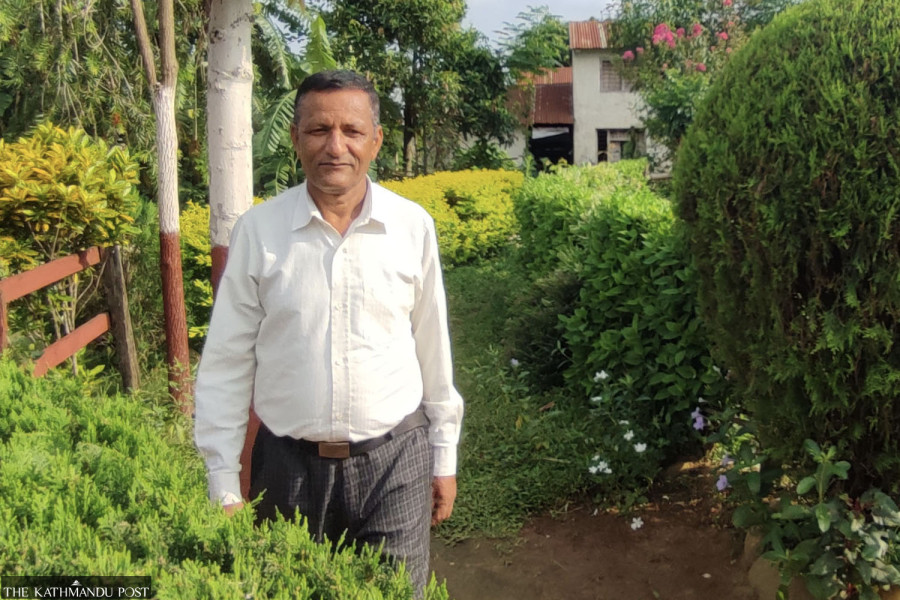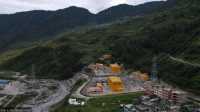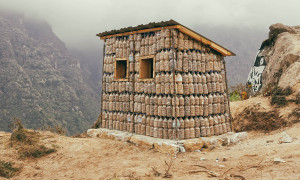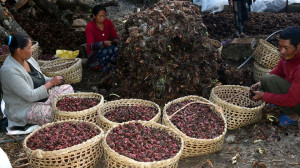Money
Once a ‘natural prison’, Madi village now welcomes thousands of tourists
Dismissed as an unlikely destination due to its remoteness, wild animals, and lack of infrastructure, Laxmibash in southern Chitwan has transformed into a thriving homestay village.
Ramesh Kumar Paudel
When Jeet Bahadur Chapagain proposed launching a homestay in his remote village of Laxmibash—located about 35 kilometres from Sauraha through the dense forests of Chitwan National Park—his idea was greeted with disbelief.
As one of the most isolated corners of the district, the thought of attracting tourists there seemed far-fetched.
Laxmibash, tucked deep within southern Chitwan, was long defined by its isolation. With a nightly travel ban in place and access requiring a journey through dense, wildlife-rich forests, the village suffered from poor infrastructure, unreliable electricity, and regular disturbances from wild animals.
During the monsoon, the lack of bridges over seasonal streams made the area nearly unreachable.
Madi, the region where Laxmibash lies, “felt like a natural prison during the rains,” Chapagain said.
The idea of starting a homestay in such a place—especially in a settlement dominated by Brahmins and Chhetris who had migrated from Parbat—seemed unrealistic to many.
“Six years ago, when I first suggested it, my friends laughed,” Chapagain recalled. “They’d say—don’t waste your time with Jeet Bahadur, who would ever come here?”
The scepticism stemmed from not just the remoteness, but also demographic makeup of the village.
Homestays in Nepal have traditionally thrived in indigenous or ethnic communities, where cultural immersion is a major draw. “Many believed tourists wouldn’t enjoy staying in Brahmin-Chhetri homes,” he said.
But the village has since undergone a quiet transformation. Chitwan’s Madi region has emerged as a surprising rural tourism success.
Today, Laxmibash boasts eight homestays.
In the last fiscal year, which ended mid-July, 8,460 guests visited.
“It’s an incredible number. None of us imagined this. And visitor numbers are still growing,” said Chapagain, who now chairs the Madi View Community Homestay. The initiative formally launched in December 2019.
Ironically, the homestay programme took off just as the Covid-19 pandemic began. The timing could not have been worse. Locals, many of whom had taken out loans to prepare their homes, were deeply discouraged.
“We feared everything would collapse,” said Prem Kumari Regmi of Homestay No. 4. “But slowly, guests began to arrive again. And now, we’re satisfied.”
Initially, many visitors were unsure what to expect in a Brahmin-Chhetri setting. But their experiences quickly changed perceptions. “We welcomed guests with bhajans and dohori folk songs. The food is organic and clean,” said Regmi, the secretary of the local homestay association. “Once we started winning hearts, word spread. And people kept coming.”
Located 35 to 40 kilometres south of Bharatpur, Laxmibash retains a traditional rural character. From Basantapur Bazaar on the Bharatpur–Madi–Thori postal highway, one travels east to Kalyanpur Tamu Chowk and then takes a two-kilometre dirt road south to reach the homestay cluster.
All the seasonal streams now have bridges, and though the final stretch isn’t blacktopped, it remains in good condition—just rustic enough to remind visitors they’ve entered the countryside.
Guests are served mostly homegrown produce. What isn’t available at home is sourced from local farms. “There’s very little use of chemical fertilisers or pesticides here,” said Chapagain. “Most people still rely on organic manure; vegetables are grown right behind our homes. Right now, guests can pick cucumbers straight from the vines.”
He believes that many urban dwellers are actively seeking such pesticide-free environments. “Even during the monsoon season, people come. I often ask them—why now? And they tell me that they’re not just escaping the noise, dust, and pollution of the city—but the chemicals too. People want to stand, even for a moment, in a toxin-free place. That’s what we offer.”
Chapagain’s homestay vision took shape while he was chairperson of the Kalyanpur Buffer Zone Community Forest. During travels to other districts, he had seen how community-based tourism could generate income. Inspired, he brought the idea home to Laxmibash, where a handful of families agreed to invest their money to build guest-ready homes.
Each homestay costs about Rs600,000 to set up.
The community forest supplied timber. As tourists began arriving, various organisations stepped in to help install hot water systems and air conditioning units. Government support, however, was minimal. “This is a community-driven effort,” Chapagain said. Other organisations also contributed to the construction of a small community hall.
“We started with four homestays. Now we have eight,” he said. Of these, five are registered under women’s names—a fact that’s had a broader social impact.
“The homestay programme sparked a sense of self-employment,” Chapagain said. “It showed us that we could sell what we produce. And we realised we didn’t have to rely only on collecting firewood and grass—we could earn income through culture, hospitality, and local skills.”
Regmi said the income helps cover everyday essentials like salt and cooking oil. “It may seem small, but it’s significant for us,” she said. The eight homestays can now host up to 40 guests at a time. A hall is also available for group training sessions or workshops. Most visitors come from Kathmandu and Hetauda.
Some have come from much farther. “People from Dadeldhura spent four days here just to study our homestay model,” Chapagain said.
Visitor traffic peaks during Nepal’s major festivals, Dashain and Tihar, and again from mid-January to mid-March. A single homestay now earns between Rs30,000 and Rs50,000 per month, depending on the season.
Madi, ringed by the Chitwan National Park and the forests of the Someshwar hills, is home to the Brahmin-Chhetri settlers of Laxmibash, the indigenous Tharu people, and smaller communities of Bote, Darai, Dura, Magar, and Gandharvas. Several of these communities have also launched homestays, each adding unique traditions and flavours to the area’s hospitality landscape.
Religious and historical sites like the ancient Someshwar Fort—built by the Sen dynasty—Baikuntha Lake, and Parashuram Kunda continue to draw daily visitors. The region’s cultural diversity, wildlife proximity, and rustic charm are becoming Madi’s most significant assets.




 9.12°C Kathmandu
9.12°C Kathmandu1.jpg)













%20(1).jpg&w=300&height=200)
